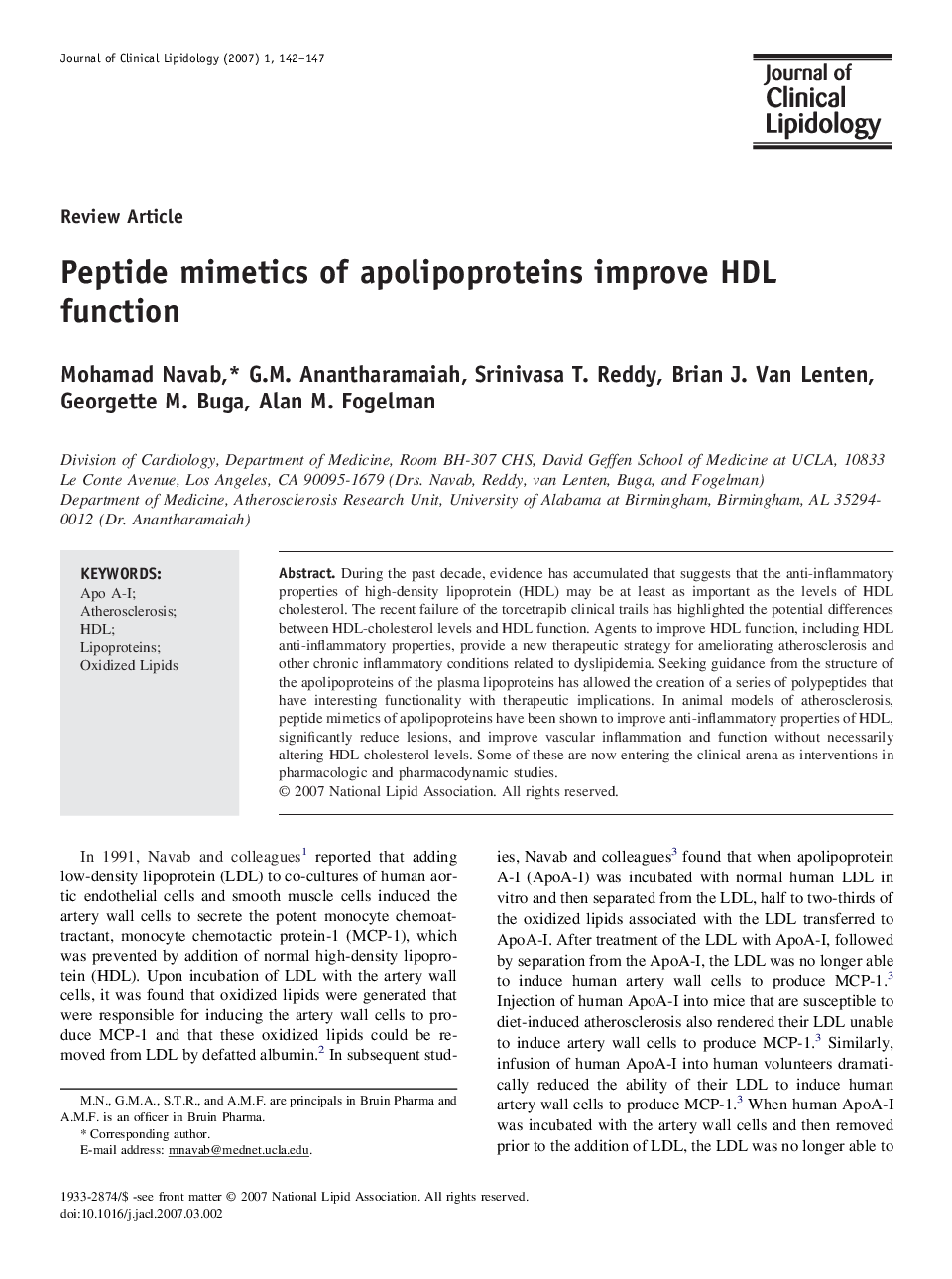| Article ID | Journal | Published Year | Pages | File Type |
|---|---|---|---|---|
| 2967048 | Journal of Clinical Lipidology | 2007 | 6 Pages |
Abstract
During the past decade, evidence has accumulated that suggests that the anti-inflammatory properties of high-density lipoprotein (HDL) may be at least as important as the levels of HDL cholesterol. The recent failure of the torcetrapib clinical trails has highlighted the potential differences between HDL-cholesterol levels and HDL function. Agents to improve HDL function, including HDL anti-inflammatory properties, provide a new therapeutic strategy for ameliorating atherosclerosis and other chronic inflammatory conditions related to dyslipidemia. Seeking guidance from the structure of the apolipoproteins of the plasma lipoproteins has allowed the creation of a series of polypeptides that have interesting functionality with therapeutic implications. In animal models of atherosclerosis, peptide mimetics of apolipoproteins have been shown to improve anti-inflammatory properties of HDL, significantly reduce lesions, and improve vascular inflammation and function without necessarily altering HDL-cholesterol levels. Some of these are now entering the clinical arena as interventions in pharmacologic and pharmacodynamic studies.
Related Topics
Health Sciences
Medicine and Dentistry
Cardiology and Cardiovascular Medicine
Authors
Mohamad Navab, G.M. Anantharamaiah, Srinivasa T. Reddy, Brian J. Van Lenten, Georgette M. Buga, Alan M. Fogelman,
